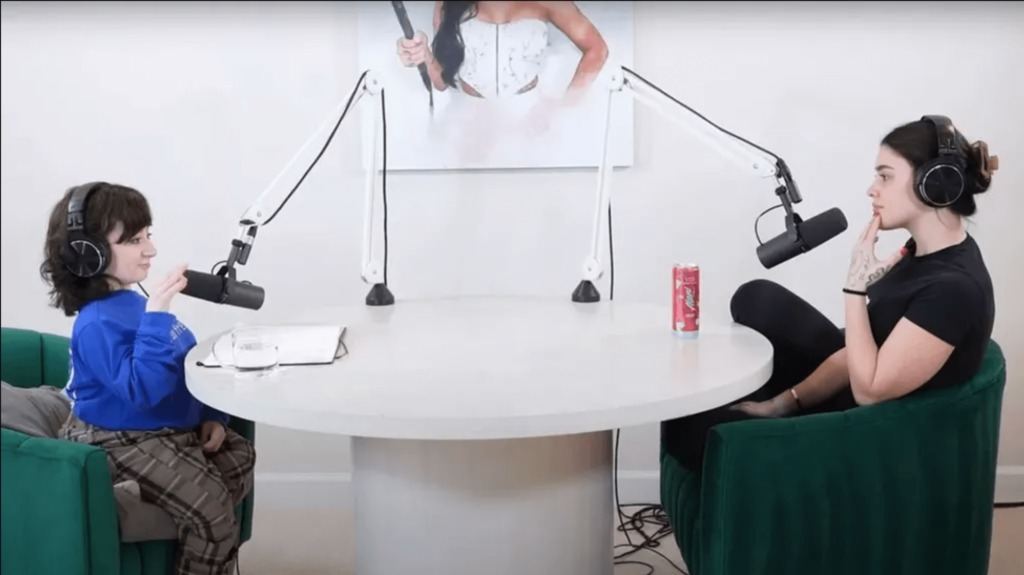Imagine a life where even the gentlest touch could lead to a fracture. For Ashley, this was her reality from the moment she was born. Diagnosed with Osteogenesis Imperfecta (OI), a rare genetic disorder that compromises collagen production, Ashley has lived through the agony of over 100 fractures. Yet, her story is not just one of pain but of incredible strength, resilience, and adaptation.
Rare Disease: Early Life and Diagnosis
Born with fractures, Ashley’s battle with OI started at birth. Her condition, which affects collagen production, leads to fragile bones, muscle weakness, fatigue, hearing loss, and scoliosis. Despite the early signs, her diagnosis was confirmed only after birth. Ashley’s bones were so delicate growing up that she would break them almost every month during her elementary school years, describing this period as “crazy.”
Living with Fragility
Throughout her childhood, Ashley’s life was a constant battle against her body’s fragility. She recalled breaking her arm completely through the bone and the myriad other fractures that marked her early years. These frequent fractures led to fatigue and balance issues, necessitating the use of a wheelchair more for stability and energy conservation than for the inability to walk.
Changing Symptoms Over Time
Standing at just three feet, eight inches tall, Ashley revealed that she has friends with the same condition who appear unaffected, often receiving a type 1 OI diagnosis later in life. This can lead to parents being wrongly accused of abuse due to unexplained fractures.
As Ashley aged, her symptoms fluctuated, describing them as “seasonal” with periods of severe and mild phases.
As Ashley aged, the nature of her symptoms evolved. By high school, her OI was less severe in terms of fractures, though she began experiencing other complications like stomach issues. She describes her condition as “seasonal,” with periods of severity and mildness.
Medical Interventions
“It’s a constant whirlwind; it’s quite puzzling. There’s still so much we don’t grasp about this condition. Interestingly, I was born in Minnesota, but my family relocated to Indianapolis to participate in an experimental treatment study for this ailment.” Ashley was part of an experimental treatment program in Indianapolis, which began before she was born. This treatment included infusions typically given to osteoporosis patients and chemotherapy patients aimed at strengthening her bones. She received these treatments every three months until she was about 12 years old, significantly improving her bone density and turnover rate.
In middle school, she transitioned to a new medication administered via injection every six months, which she continued until she turned 20. This regimen was crucial in managing her condition, allowing her to lead a more stable life despite the ongoing challenges.
A Complex Condition
Ashley’s story highlights the complexities and variabilities of OI. She noted, “There’s a lot we don’t know about this disorder.” Her journey reflects the ongoing learning and adaptation required in managing such a rare condition. Despite the challenges, Ashley remains a beacon of hope and resilience for others with OI, demonstrating that life, even with such a debilitating condition, can be lived to its fullest.
Conclusion
Spending three days in the hospital for an IV infusion, Ashley witnessed remarkable bone density and turnover rate improvements. Transitioning to a new medication in middle school, administered via injection every six months, she eventually bid farewell to treatments altogether by the age of 20. Her story underscores the importance of ongoing research and medical support for rare conditions and highlights the resilience of those who live with such conditions daily. For the medical community, Ashley’s journey is a testament to the power of innovative treatments and the human spirit’s capacity to adapt and thrive despite unimaginable challenges.
References
Woman’s broken more than 100 bones over rare disease including ‘once a month’ at school [Internet]. Accessed on June 12, 2024. Available at: https://uk.news.yahoo.com/womans-broken-more-100-bones-155623438.html
About Docquity
If you need more confidence and insights to boost careers in healthcare, expanding the network to other healthcare professionals to practice peer-to-peer learning might be the answer. One way to do it is by joining a social platform for healthcare professionals, such as Docquity.
Docquity is an AI-based state-of-the-art private & secure continual learning network of verified doctors, bringing you real-time knowledge from thousands of doctors worldwide. Today, Docquity has over 400,000 doctors spread across six countries in Asia. Meet experts and trusted peers across Asia where you can safely discuss clinical cases, get up-to-date insights from webinars and research journals, and earn CME/CPD credits through certified courses from Docquity Academy. All with the ease of a mobile app available on Android & iOS platforms!







